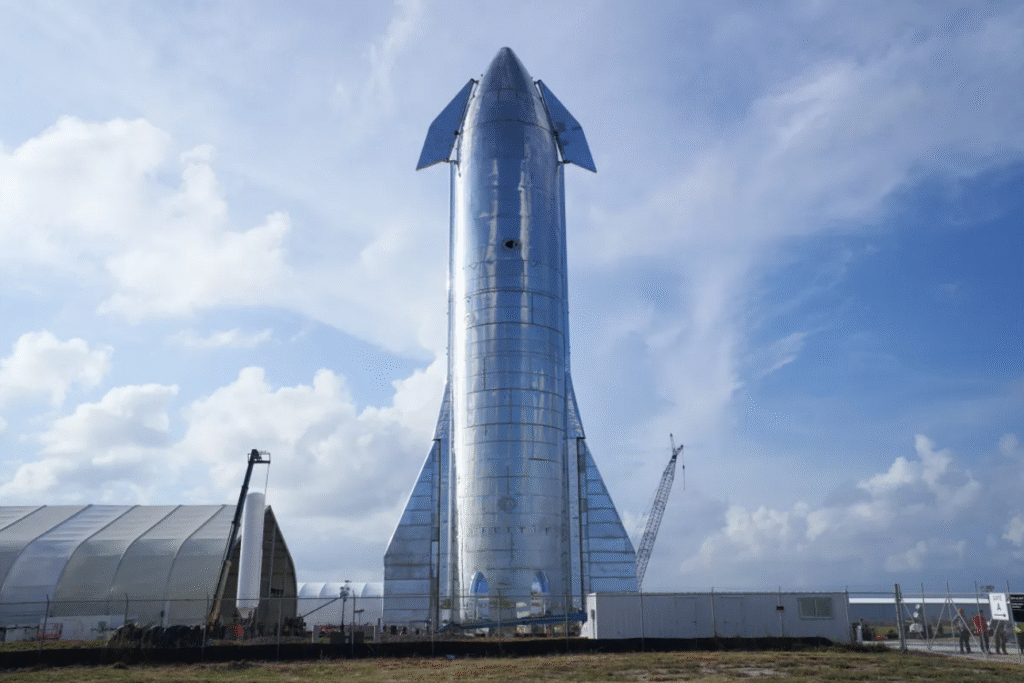A dramatic explosion during SpaceX’s Starship test rocked the Texas launch site, but Elon Musk calls it a critical learning moment. Discover how this fiery incident could actually fuel progress toward humanity’s Mars mission.

🔰 A Blast That Sparked Global Attention
On June 18, 2025, the SpaceX Starbase in Texas experienced a fiery explosion during a static fire test of the Starship Ship 36 prototype. While flames and debris grabbed the world’s attention, Elon Musk and his team didn’t panic—they saw it as another step toward mastering the technologies needed to colonize Mars.
Let’s walk through the incident, SpaceX’s reaction, and why this fiery test could lead to even greater breakthroughs.
🔍 What Happened During the Test?
A static fire test involves firing a rocket’s engines while it’s anchored to the ground. It’s meant to simulate launch conditions and ensure the engines and support systems are working properly.
But this time, things didn’t go as planned:
- Just seconds before full ignition, a massive explosion erupted.
- Flames and debris spread across the testing area.
- No injuries were reported, thanks to strict safety protocols.
- The vehicle was lost, but vital engineering data was captured.
This test, though destructive, provided real-time performance insights that can’t be replicated in computer simulations.
🛠️ Learning Through Failure: The SpaceX Approach
Most aerospace companies fear failure—but SpaceX embraces it.
Their model is based on iterative testing:
- Try, fail, learn, and try again—as fast as possible.
- Rapid hardware testing uncovers flaws before they impact actual missions.
- Failures generate high-value telemetry data used to improve rocket design, fuel systems, and structural resilience.
Instead of hiding test failures, Elon Musk openly discusses them. It’s a culture that values transparency and long-term success.
📚 A History of Explosive Progress
This isn’t the first time Starship has met a fiery end—and likely won’t be the last.
Here’s a look at some previous setbacks:
- January & March 2025: Mid-air explosions during test flights over the Atlantic and Caribbean.
- May 2025: A Starship spiraled out over the Indian Ocean during another demo flight.
Each incident added critical data to improve the next version. And despite these fiery endings, SpaceX has shown remarkable turnaround speed between launches.
🧬 Why These Failures Are Crucial
Rocket science isn’t easy—and real-world testing is essential.
Here’s why “failures” like this are valuable:
- Provide real engine stress data and help identify unexpected weak points.
- Allow engineers to adjust algorithms, heat shielding, and fuel flow systems.
- Offer insights that no lab or simulation can match.
This method of fast, iterative innovation helped SpaceX transform Falcon 9 into the world’s most successful reusable rocket. Now, they’re applying the same model to Starship.
🗣️ SpaceX’s Official Response
SpaceX issued a confident and reassuring statement shortly after the incident:
“All personnel are safe and accounted for. We’re working with local authorities to investigate and improve.”
Their message focused on safety, responsibility, and a commitment to progress.
This quick communication built public trust and reinforced the company’s professionalism in managing high-risk operations.
🚀 What Made This Test So Important?
The June 18 test was especially significant because:
- It was supposed to feature the first-ever reused Super Heavy Booster—a huge milestone for rocket reusability.
- The explosion delayed the timeline, but did not halt the mission.
- Engineers are now examining the causes, adjusting designs, and preparing for the next launch attempt.
SpaceX knows setbacks are part of the process—and every test makes the next one stronger.
🌌 Starship’s Bigger Role in the Mars Vision
The Starship isn’t just a rocket—it’s the centerpiece of Elon Musk’s dream to colonize Mars.
Here’s what the future looks like:
- 1,000 to 2,000 Starships launching every two years to build a Mars base.
- Uncrewed cargo missions beginning as early as late 2026.
- A long-term goal of a self-sustaining Mars colony by the 2030s.
Even this dramatic explosion won’t stop SpaceX’s plan—it’s just another step in the long journey.
🤖 Robots Will Lead the Way: Meet Tesla’s Optimus
One highlight of the Mars mission is the use of Tesla’s Optimus humanoid robots.
- These will be part of the 2026 uncrewed Starship flight.
- Their role? Simulate human tasks, pressure tolerance, and long-duration systems.
- They’ll test everything from navigation in zero gravity to survival in harsh planetary conditions.
It’s a creative way to prepare for future human settlers—without risking lives.
🧱 Safety Systems That Worked
Despite the explosion, SpaceX’s safety protocols performed flawlessly:
- All personnel stayed outside the secure zone.
- Emergency procedures were triggered immediately.
- No surrounding infrastructure or public areas were affected.
This proves that even during a worst-case scenario, SpaceX is ready and equipped to manage risk.
🌠 Public Trust and Investor Confidence Remain High
The blast made headlines—but it didn’t scare off the public or investors.
- Fans admire SpaceX’s resilience and transparency.
- Investors see the long-term vision and support the company’s bold testing approach.
- Elon Musk continues to attract talent and funding to fuel the mission.
Failures don’t scare SpaceX supporters—they inspire them.
UPDATE: Here is a slowed and cropped look at Ship 36’s explosive RUD tonight. Credit to @dwisecinema for capturing the moment.
— SpaceX News Starbase TX (@SpaceXNewsTX) June 19, 2025
#Ship36 #RUD #Starship #SpaceX #Starbase https://t.co/Uwh36gDn0m pic.twitter.com/Dmky5E6H6o
🔭 What’s Next?
Originally, SpaceX was set to launch the next Starship on June 29, 2025, featuring the reused booster.
After the incident, the next steps include:
- Investigating the anomaly
- Rebuilding and modifying Ship 36
- Strengthening booster integration systems
- Gaining FAA approval for the next test
Expect another launch attempt within weeks, not months.
🧭 Fire Fuels the Future
Yes, the Starship exploded.
But no, the mission is not over.
Every blast, every break, and every burned-out booster is a lesson pushing humanity closer to Mars. Elon Musk’s team continues to dream big, test hard, and move fast.
This explosion wasn’t a failure.
It was fuel for the future.